
Powerful Holiday Marketing Campaigns to Win Hearts & Loyalty
For many years, the holidays were predictable: a surge in shopping in late November, a climax on Christmas, and a fade in January. But in 2025, this rhythm is gone. Shopping does not erupt on Black Friday and die by New Year’s. It extends over weeks, and it becomes a series of micro-moments, each uniquely powered by targeted campaigns that require as much agility as creativity.
Retailers that still pin their hopes on “the big weekend” are losing ground already. The retailers that win are the merchants who are designing holiday marketing as a marathon of short sprints—weekly campaigns that keep shoppers intrigued, engaged, and regaining shopper loyalty.
Let’s unpack the importance of this “holiday season extension,” how to run effective weekly campaigns, and look at actual 2025 instances that are already setting the standard higher.
Why a single flash isn’t enough (anymore)
It’s no longer enough to engage shoppers with a single big holiday sales event. Attention spans are shrinking, and shopping habits are spanning into weeks. Brands must have a continuous presence. Weekly campaigns help marketers stay relevant, react in the moment, and engage consumers across the entire season.
AdPulse summed it up perfectly earlier this year:
“Festivals are emotional triggers. People aren’t just buying products; they’re buying rituals, traditions, and memories. Unlike a single day of sales from Black Friday to the holidays, campaigns need chapters.”
1. Shopper behavior has changed: Shoppers today do not wait for the “official holiday time.” AdRoll’s 2025 holiday marketing trends indicate that 37 percent of shoppers plan to start shopping in September or October — more than the 32 percent who are planning to wait until November-December.
2. Attention is harder to come by; the noise is louder: Inevitably, when every brand drops its “Holiday XX Deals” banner overnight, campaigns collide and audiences filter through your campaign messages. Weekly campaigns allow you to re-enter the conversation with fresh, unique, and timely stories. Think episodic storytelling, not a single blockbuster.
3. Smoother revenue and risk mitigation: Depending on a few mega sale dates is a huge risk: stockouts, logistics, or overspending can easily result in poor results. Weekly offerings spread demand, create inventory stability, and enable quick response. If week two goes awry, week three is still available to stabilize the overall campaign’s results.
Let’s understand the anatomy of a winning weekly holiday campaign
Think of the season as a marathon made up of short sprints. Each week gives you an opportunity to create a new reason to pay attention, engage, and purchase — a new chapter in your brand’s holiday narrative.
- Freshness: Rather than bombarding your audience with the same sale copy for six continuous weeks, the goal of weekly campaigns is to create a cadence of freshness.
- Resiliency: If Week 2 doesn’t perform, there’s an opportunity to pivot the week before the season is over.
- Customer connection: Episodic campaigns help mimic how people shop — in multiple bursts and typically prompted by inspiration or urgency, rather than one planned shopping trip.
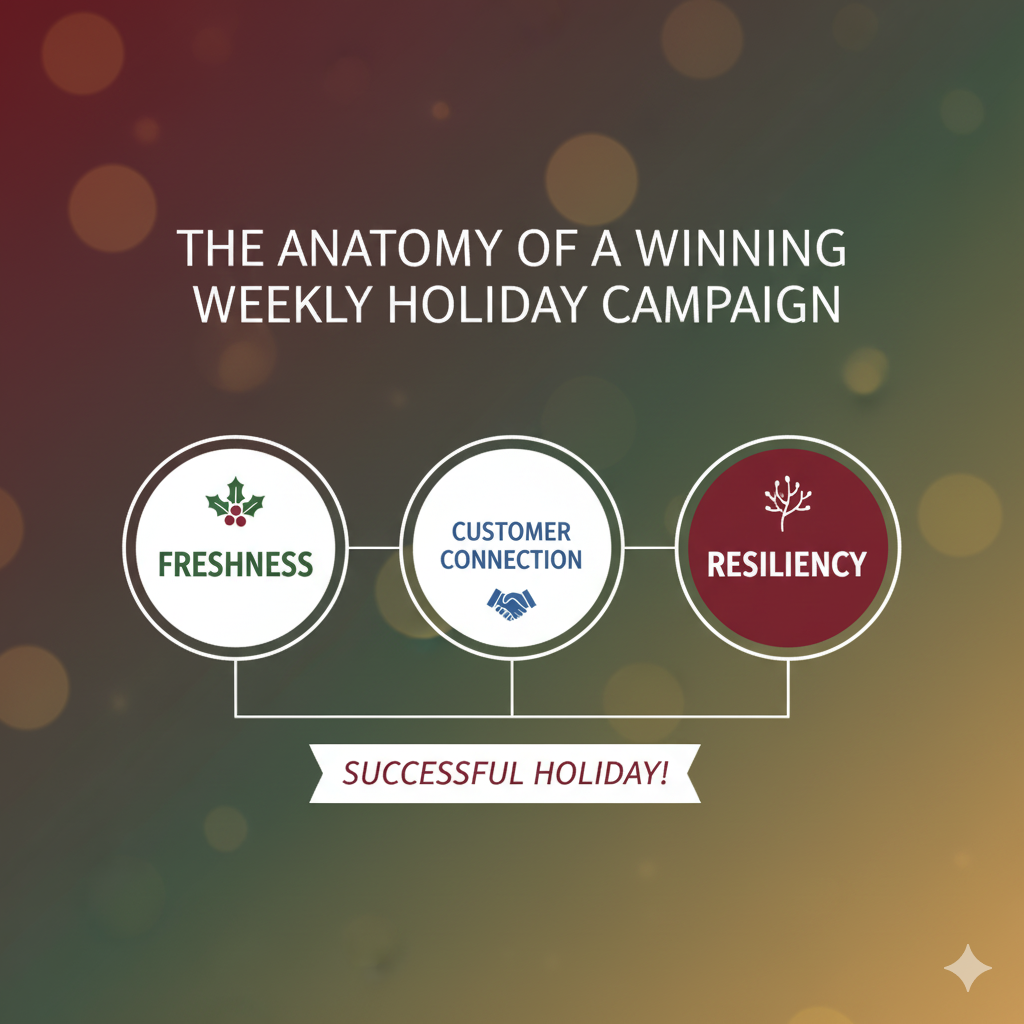
To implement this tactic, brands can simply follow a general framework
Brands don’t need complicated playbooks or massive budgets to make this work. They can turn bold ideas into real results by sticking to a few key principles.
- Define weekly themes: Develop discrete phases like early-bird teasers, gift guides, bundles, last-minute urgency, and post-holiday, so each week feels new, but connected.
- Layer channels wisely: Leverage emails, social media, and ads to complement each other, such as email guides, social bundles, ad contests, and testimonials, while alternating weekly focus and buffer content.
- Urge urgency: Indicate that “this week only” deals, flash offers, and countdowns are available on your site; don’t overdo it or risk undermining your credibility.
- Focus on product UGC: If possible, feature customer unboxings, wish lists, or holiday setups every week to generate authenticity and continuity.
This is not purely in theory. As early as 2025, global brands test this rhythm with remarkable creativity.
How brands are executing weekly momentum
These examples demonstrate how brands are looking to maximize their momentum during the holiday season by skipping beyond a one-day promotion. Through rolling out a new campaign every week, they keep the audience engaged, excited, and drive repeat visits and purchases.
e.l.f. Cosmetics—”Gift-Tok Shop” Live Events
Instead of saving it for “Christmas week,” e.l.f. decided to run weekly TikTok live shopping events ahead of time. Each week’s show had a different theme (skincare, lip sets, holiday kits), a limited-time bundle, and a chance to engage with followers via Q&A. This approach created success in retaining followers’ engagement while utilizing ad spend evenly over time.
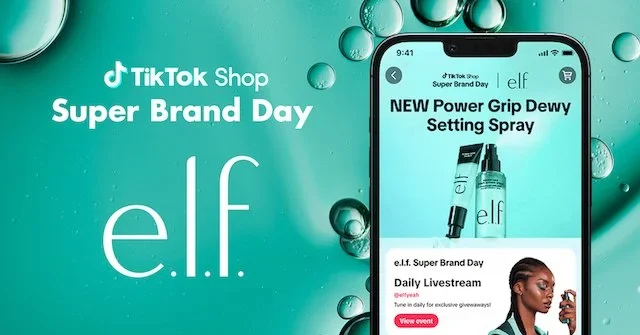
LEGO—Holiday Gift Builder” AR Experience
LEGO’s AR activation in 2025 wasn’t a one-off. The activation was launched in phases: 1) teaser, 2) launch of the “build your own gift set” AR microsite, and 3) weekly promotional push tied to subsets of brick packs. The activation promoted repeat visits and created urgency for collectors.
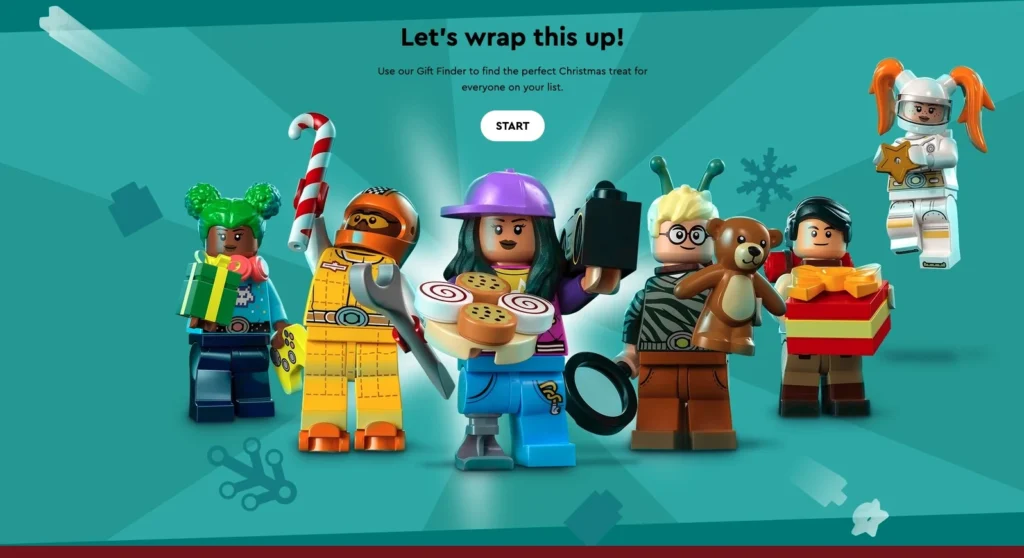
Gymshark—”Black Friday: The Lift List”
Gymshark worked not towards one drop but teased, launched, and then deployed the “Lift List” in successive subsets over weeks—combining influencer pushes, UGC, and freemiums.
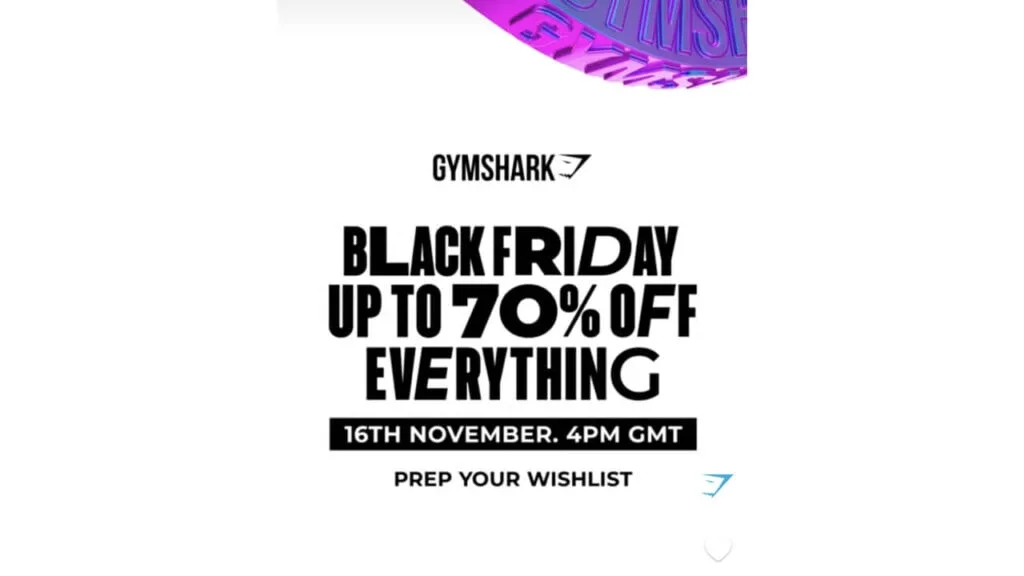
Hidden Valley Ranch—Holiday Cards + Sachets
Even non-traditional categories can be successful in extending a twisty campaign. Hidden Valley launched festive greeting cards that included single-serving ranch packets as an ongoing shareable on social. This began early and ran into December, with a different creative surface every week.
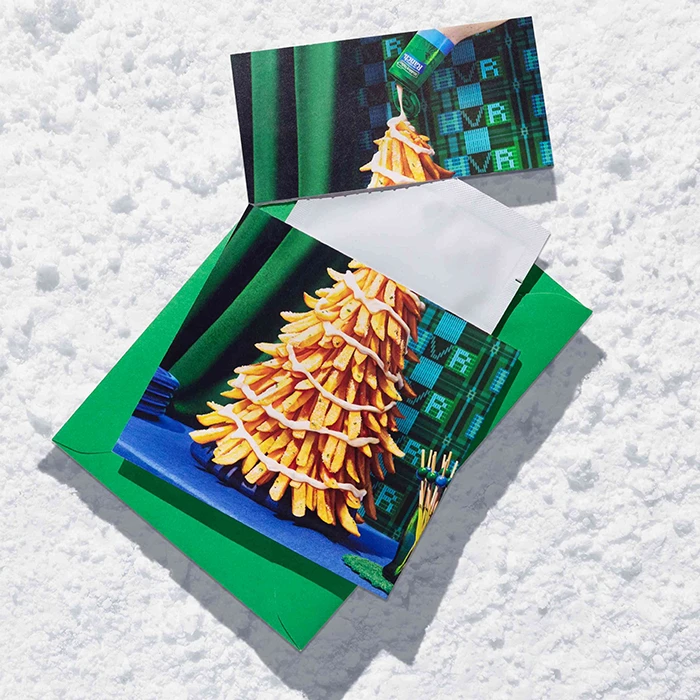
These examples illustrate something important: extending something doesn’t necessarily mean.
Why weekly wins in 2025 (Storytelling + surprise = retention)
Three significant forces will make this approach not just an effective model, but a model of necessity entering this year:
- Noise inflation: By the time December comes, there will be a lot in the inbox. Weekly campaigns allow brands to cut through the noise with “different” each week.
- Logistics volatility: From global shipping constraints to rising and increasing fulfillment and shipping costs, simply spreading demand over several weeks can lessen operational risk. Brands that ransom an entire season’s demand into two or three mega-days run the risk of delays and stock-outs.
- Consumer pace: Shoppers are more and more budgeting in installments. Weekly campaigns align naturally with consumer pay cycles and how modern consumers pace their purchases.
“The winners of 2025 are not the ones who yell the loudest at the end of the season but who kept the conversation going throughout the season,” were the wise words of a couple of marketing analysts earlier this year.
Crafting a narrative—not just promotions for future
The most advanced holiday marketers treat weekly campaigns like chapters in a narrative. In week one, the spotlight is on exclusivity for early birds. By week two, the focus moves to curated gift guides. Come week three, urgency kicks in with time-limited bundles. From week four onward, campaigns can center on user-generated content or influencer showcases.
What’s beautiful about this approach is consistency: it almost feels like every week is fresh, yet it also feels like every week provides continuity. The consumer is not seeing segmented promotions; they’re witnessing a brand creating weekly storytelling.
The other benefit of weekly campaigns is the ability to surprise and delight. Whether it be dropping an unscheduled mystery offer, running a 48-hour contest, or featuring a customer’s unboxing video, these micro-moments keep the consumer’s curiosity piqued.
Cut to the chase
Approach your holiday campaigns as a narrative rather than just a subject of discounted pricing, and keep the messaging entertaining, unified, and suspenseful each week—without overwhelming your team or tiring the audience. Find the right cadence, captivate your customers, and watch your engagement levels rise. Start today by designing your winning weekly narrative.


